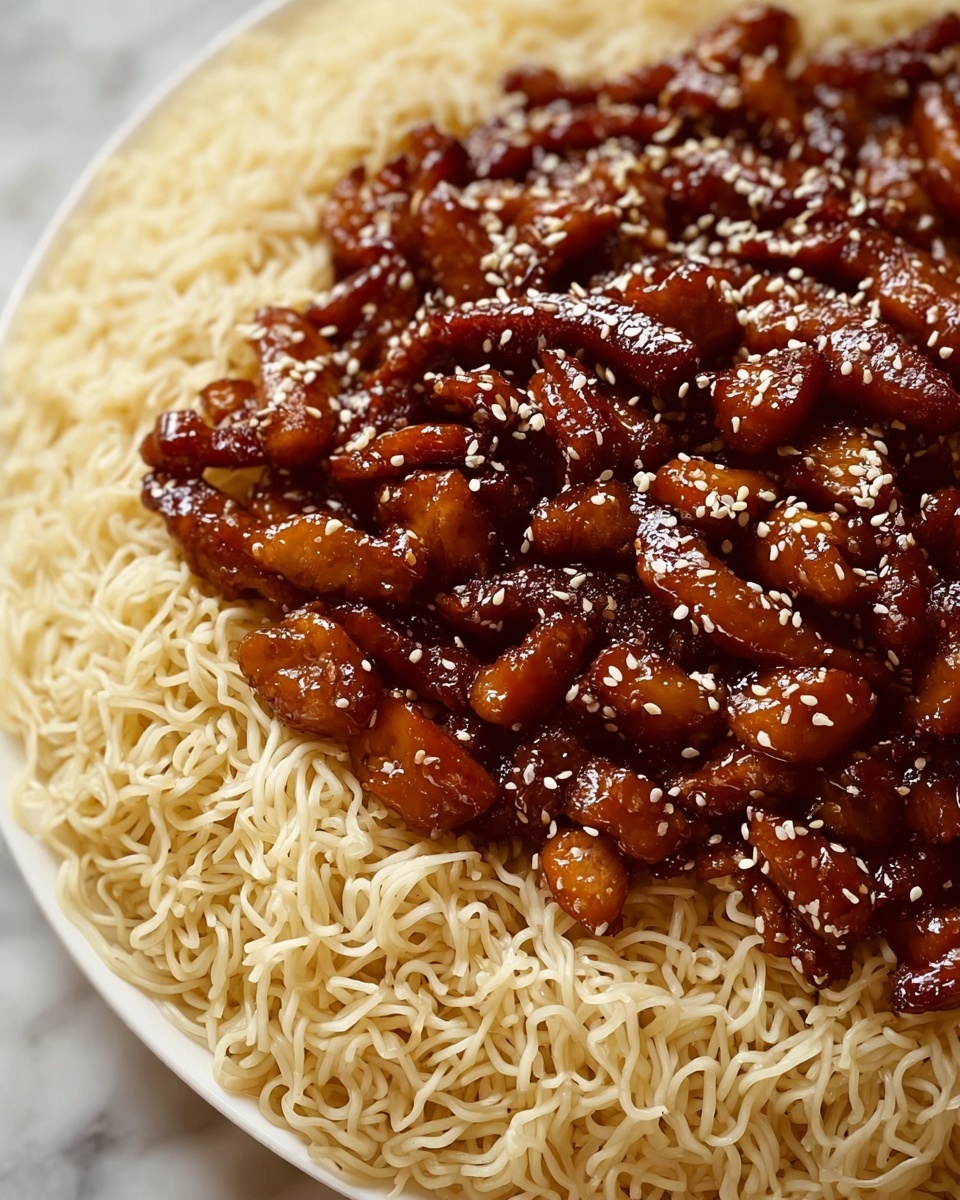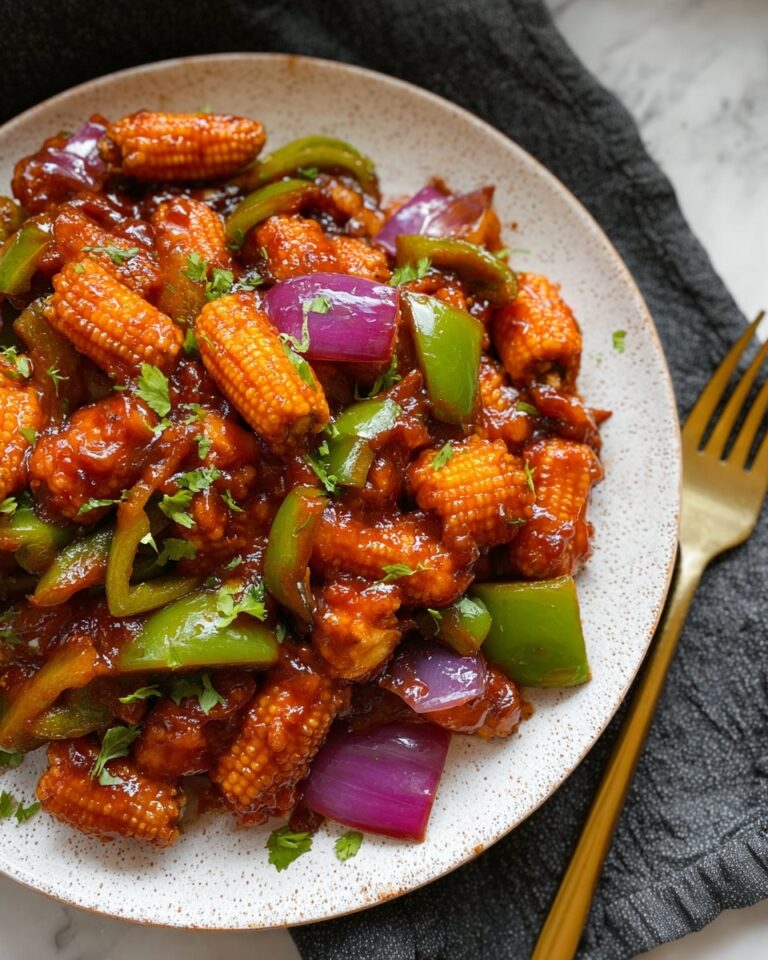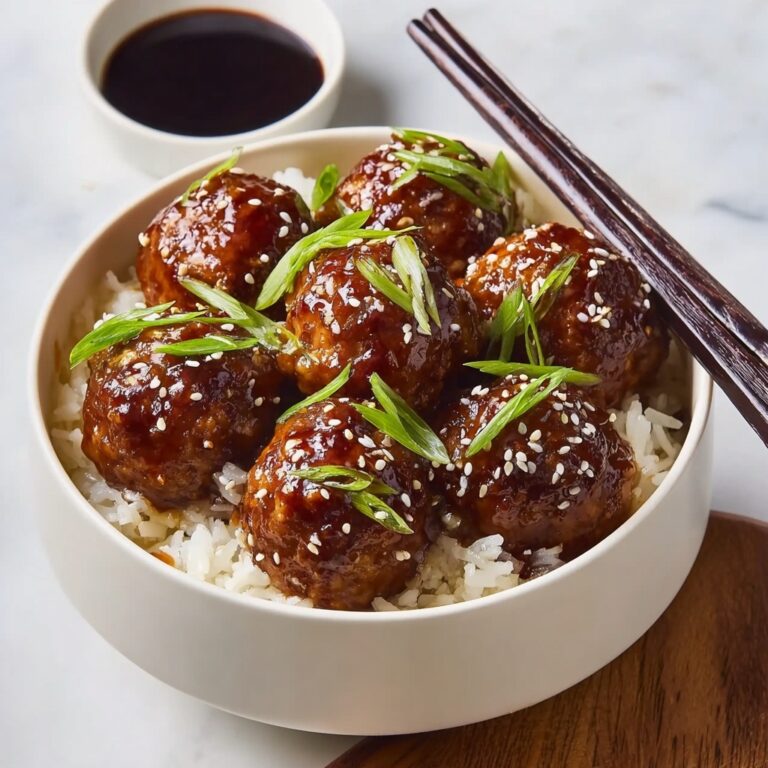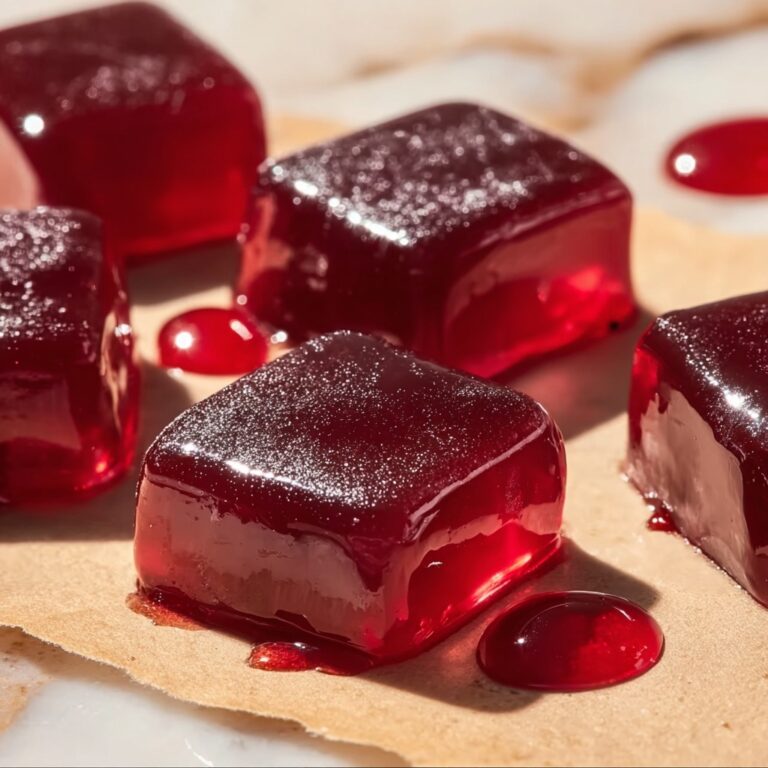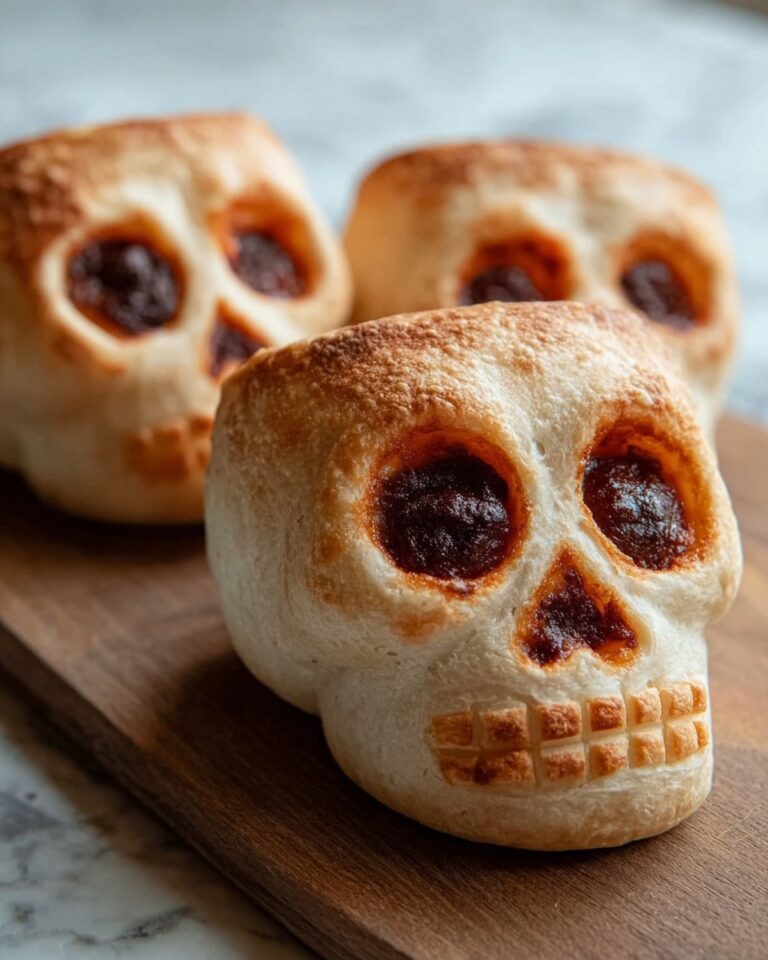If you love the delightful combination of savory, buttery noodles with a hint of sesame and garlic, then this Hibachi Noodles Recipe will become one of your favorites in no time. It’s a simple yet incredibly flavorful dish inspired by classic hibachi-style cooking, blending tender noodles with crisp vegetables and just the right touch of soy and oyster sauces. Whether you’re craving a quick weeknight dinner or something special for a casual gathering, this recipe delivers authentic taste without any fuss.
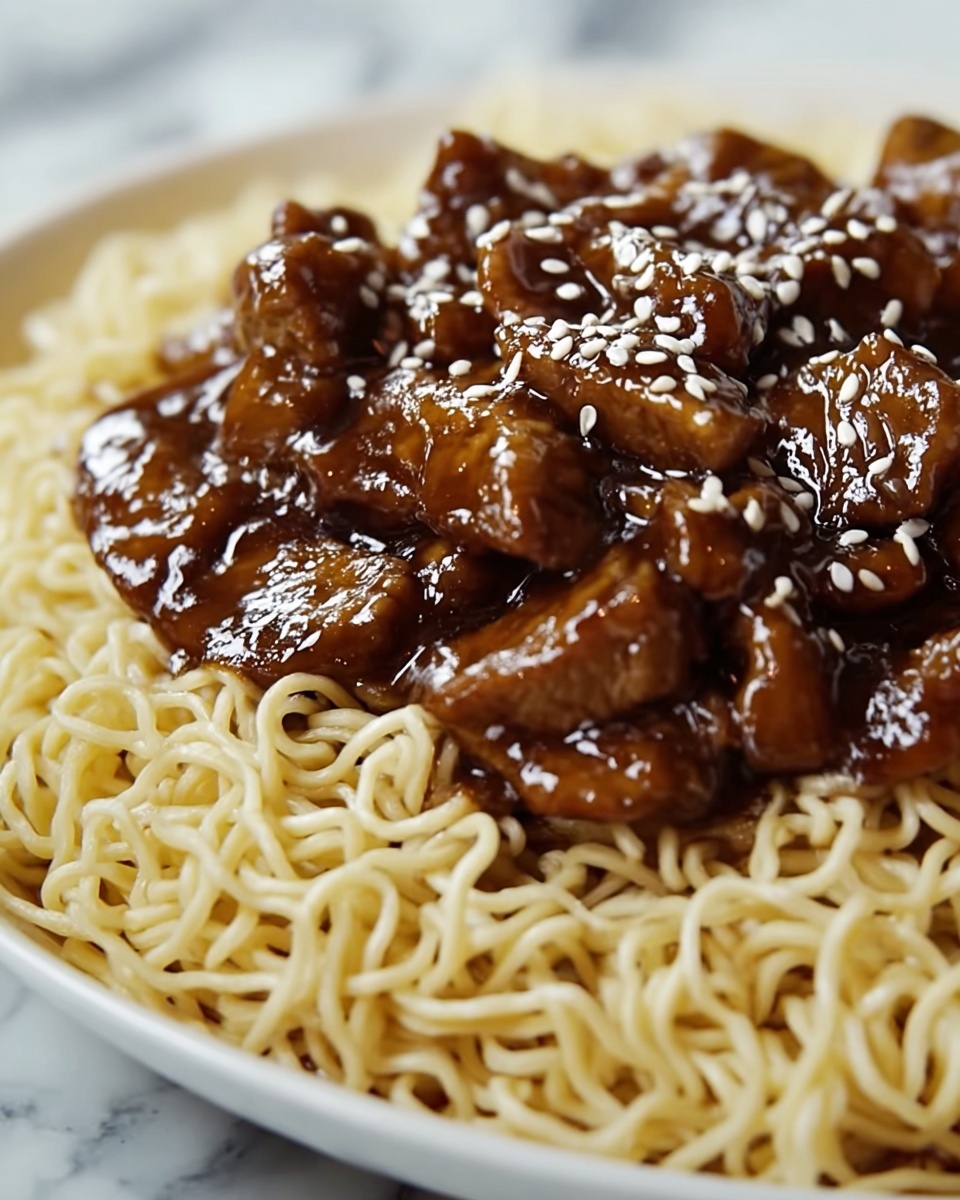
Ingredients You’ll Need
The beauty of this Hibachi Noodles Recipe lies in its straightforward ingredients list, each chosen to add its own texture, aroma, and flavor depth. From the chewy noodles to the fragrant garlic and the rich buttery finish, all these ingredients come together effortlessly to create that iconic hibachi taste.
- 8 oz lo mein or soba noodles: These noodles provide the perfect chewy base; spaghetti can work if you’re in a pinch.
- 2 tbsp sesame oil: Adds a nutty, toasty flavor essential for authentic hibachi flavor.
- 3 cloves garlic, minced: Brings a punch of aromatic sharpness that awakens the dish.
- 1 small onion, sliced: Offers subtle sweetness and crunch when sautéed.
- 1 medium carrot, julienned or thinly sliced: Adds bright color and a fresh, crisp bite.
- ½ cup sliced mushrooms (optional): Provides earthiness and umami depth.
- 2 tbsp soy sauce: The salty backbone that ties all flavors beautifully together.
- 1 tbsp oyster sauce (optional): Intensifies the savory richness of the dish.
- 1 tbsp butter: Melts in for that smooth, glossy finish everyone loves.
- 1 tbsp lemon juice (optional): A surprising burst of brightness that balances the richness.
- 1 tsp sesame seeds (for garnish): Adds a subtle crunch and toasty flair on top.
- 2-3 green onions, sliced (for garnish): Freshness and color that make this dish pop visually and taste-wise.
How to Make Hibachi Noodles Recipe
Step 1: Cook the Noodles
Start by cooking your noodles according to the package directions — this step sets the stage for the entire dish. Drain them well, but be sure to save about half a cup of the cooking water; this little trick helps loosen the mixture later so your noodles are perfectly silky without sticking.
Step 2: Sauté Garlic and Onion
Heat the sesame oil in a skillet or wok over medium-high heat, then toss in the minced garlic and sliced onion. The smell here is intoxicating as they sizzle and soften, building a fragrant base that hints at the deliciousness to come.
Step 3: Add the Vegetables
Next, stir in the julienned carrots and mushrooms if you’re using them. Cooking these just right means they stay crisp, offering delightful texture contrast to the tender noodles, plus a wonderful freshness that lightens the dish.
Step 4: Combine Noodles and Sauces
Now it’s time to bring everything together. Add the drained noodles to the pan and pour in soy sauce and oyster sauce. Toss everything thoroughly so every strand and slice is coated with flavor. Use the reserved noodle water sparingly to loosen up the pan mixture if it feels dry — this keeps the dish luscious and smooth.
Step 5: Finish with Butter and Lemon
For the final flourish, melt in the butter, swirling it through the noodles to give a rich, glossy coating. A splash of lemon juice brightens all those deep savory notes, adding a subtle zing that elevates the entire dish beautifully.
Step 6: Garnish and Serve
Transfer your hibachi noodles to a serving plate then sprinkle the sesame seeds and sliced green onions on top. This adds just the right amount of crunch and color to make the dish look as irresistible as it tastes. Serve immediately and enjoy the perfect harmony of flavors and textures!
How to Serve Hibachi Noodles Recipe
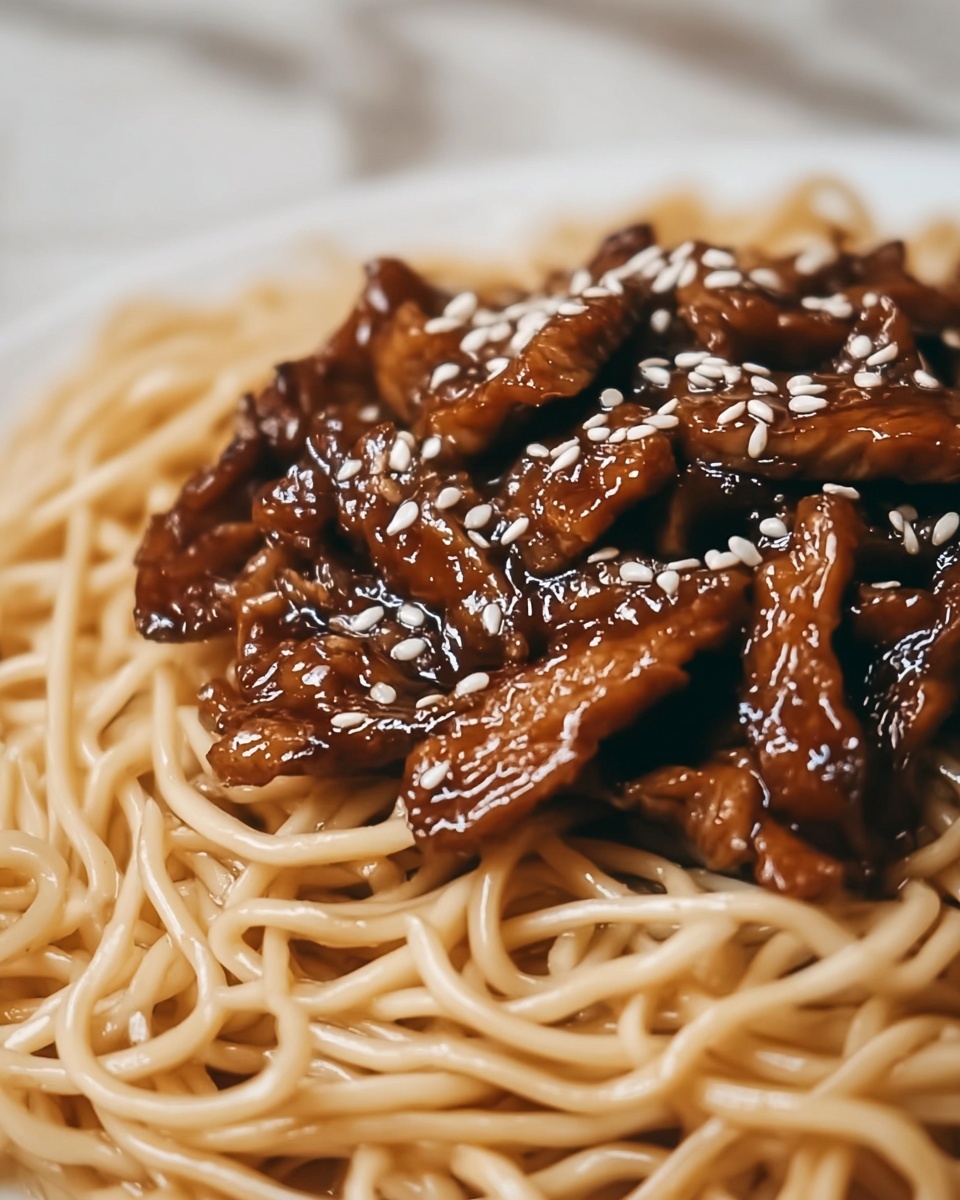
Garnishes
Sprinkle roasted sesame seeds and green onions generously to bring out the vivid colors and delightful textures. You can also add a wedge of lemon on the side for an extra fresh squeeze if desired. These little touches make the dish feel special and inviting every time.
Side Dishes
Hibachi noodles pair wonderfully with grilled proteins like chicken, shrimp, or steak to create a full hibachi-style meal. Steamed or sautéed vegetables like broccoli or bok choy also complement the dish perfectly, balancing the rich noodles with crisp greens.
Creative Ways to Present
For a fun twist, serve these hibachi noodles in individual small bowls garnished with edible flowers or chopped fresh herbs like cilantro. You could also use a cast iron skillet or hibachi-style grill plate for an authentic presentation that impresses guests and amps up the dining experience.
Make Ahead and Storage
Storing Leftovers
Store any leftover hibachi noodles in an airtight container in the refrigerator for up to 3 days. They’ll retain their flavor and texture well if reheated gently, making them perfect for next-day lunches or quick dinners.
Freezing
You can freeze hibachi noodles, but for best quality, it’s better to freeze without the garnishes. Portion into freezer-safe containers or bags and use within 2 months. Thaw overnight in the fridge before reheating to preserve texture and taste.
Reheating
To reheat, warm the noodles gently in a skillet over medium heat, adding a splash of water or oil to restore moisture and prevent sticking. Avoid microwaving at high heat as it can make the noodles tough and dry.
FAQs
Can I use regular spaghetti noodles instead of lo mein?
Absolutely! While lo mein or soba noodles are preferred for their texture, regular spaghetti is a fine substitute and will still absorb the sauces nicely.
Is oyster sauce necessary for the recipe?
Oyster sauce adds a lovely depth and sweetness, but if you don’t have it, the dish still tastes fantastic with just soy sauce and butter.
Can I make this dish vegetarian?
Yes! Simply omit the oyster sauce (which contains shellfish) and substitute with vegetarian oyster sauce or add extra soy sauce and mushrooms for umami flavor.
How can I make this recipe spicier?
Add a pinch of red pepper flakes or a dash of chili oil while stir-frying for a nice spicy kick that enhances the flavors wonderfully.
What other vegetables work well in hibachi noodles?
Snap peas, bean sprouts, bell peppers, and zucchini all make excellent additions, offering vibrant color and texture contrast to the noodles.
Final Thoughts
I hope you give this Hibachi Noodles Recipe a go because it truly captures that wonderful hibachi house flavor with such ease and comfort. It’s a warm, inviting dish that feels special yet is surprisingly quick to prepare. Once you try it, I bet it’ll become one of those go-to meals you keep coming back to. Enjoy every tasty bite!
Print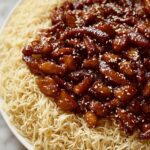
Hibachi Noodles Recipe
- Prep Time: 10 minutes
- Cook Time: 15 minutes
- Total Time: 25 minutes
- Yield: 4 servings
- Category: Main Course
- Method: Stovetop
- Cuisine: Japanese
Description
This Hibachi Noodles recipe offers a flavorful and quick stir-fry dish featuring tender lo mein or soba noodles tossed with fresh vegetables, savory sauces, and aromatic seasonings. The balance of soy, sesame oil, and optional touches like oyster sauce and lemon juice bring an authentic Japanese-inspired taste perfect for a satisfying meal in just 25 minutes.
Ingredients
Noodles and Sauce
- 8 oz lo mein or soba noodles (or spaghetti as a substitute)
- 2 tbsp sesame oil (or vegetable oil)
- 2 tbsp soy sauce
- 1 tbsp oyster sauce (optional)
- 1 tbsp lemon juice (optional)
- 1 tbsp butter
Vegetables and Aromatics
- 3 cloves garlic, minced
- 1 small onion, sliced
- 1 medium carrot, julienned or thinly sliced
- ½ cup sliced mushrooms (optional)
Garnishes
- 1 tsp sesame seeds
- 2–3 green onions, sliced
Instructions
- Cook the noodles: Cook the lo mein or soba noodles according to the package instructions until al dente. Drain them well and set aside, reserving about ½ cup of the cooking water to adjust the sauce consistency later.
- Prepare the stir-fry: Heat the sesame oil in a large skillet or wok over medium-high heat. Add the minced garlic and sliced onion, sautéing for 1-2 minutes until fragrant and the onions become slightly softened.
- Add the vegetables: Add the julienned carrot and sliced mushrooms (if using) to the skillet. Stir-fry for 3-4 minutes, cooking the vegetables until they are tender but still retain a crisp texture.
- Add the noodles and sauces: Toss the cooked noodles into the skillet with the vegetables. Pour in the soy sauce and oyster sauce (if using), stirring thoroughly to combine all ingredients. Gradually add reserved noodle cooking water as needed to loosen the noodles and create a glossy sauce coating.
- Finish the dish: Stir in the butter, allowing it to melt completely and coat the noodles for a rich, luscious finish. Optionally, squeeze in lemon juice to add a hint of bright acidity to the dish.
- Garnish and serve: Transfer the hibachi noodles to a serving plate. Garnish with sesame seeds and sliced green onions. Serve immediately while hot and enjoy the vibrant flavors!
Notes
- Using oyster sauce adds depth and richness but can be omitted for a vegetarian version or if unavailable.
- Spaghetti is a good substitute if you cannot find lo mein or soba noodles.
- Reserve some noodle water to adjust sauce consistency and keep noodles moist.
- Feel free to add other vegetables like bell peppers or snap peas for variety.
- For a spicy kick, add a dash of chili flakes or sriracha when adding sauces.

